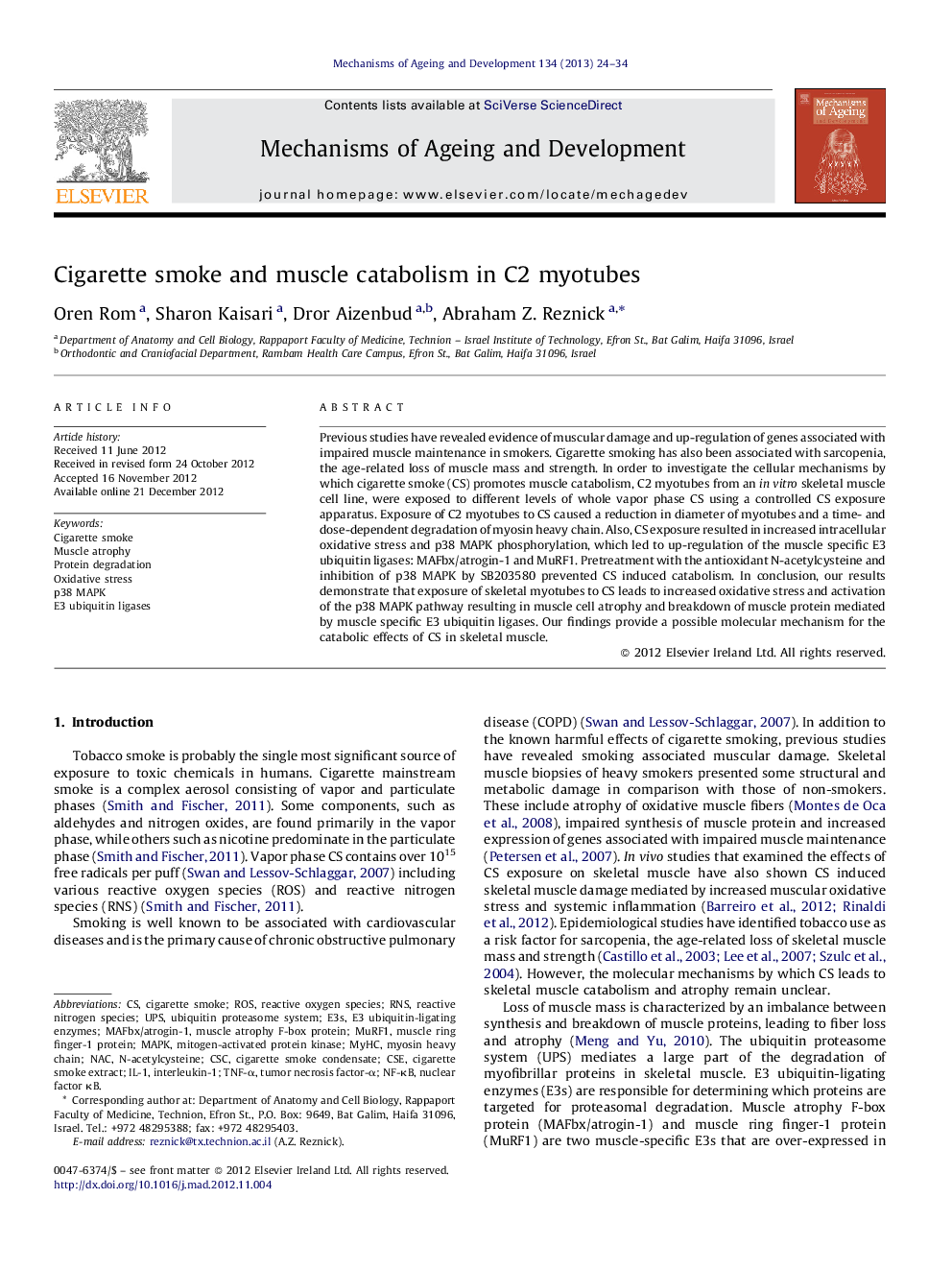| Article ID | Journal | Published Year | Pages | File Type |
|---|---|---|---|---|
| 1919281 | Mechanisms of Ageing and Development | 2013 | 11 Pages |
Previous studies have revealed evidence of muscular damage and up-regulation of genes associated with impaired muscle maintenance in smokers. Cigarette smoking has also been associated with sarcopenia, the age-related loss of muscle mass and strength. In order to investigate the cellular mechanisms by which cigarette smoke (CS) promotes muscle catabolism, C2 myotubes from an in vitro skeletal muscle cell line, were exposed to different levels of whole vapor phase CS using a controlled CS exposure apparatus. Exposure of C2 myotubes to CS caused a reduction in diameter of myotubes and a time- and dose-dependent degradation of myosin heavy chain. Also, CS exposure resulted in increased intracellular oxidative stress and p38 MAPK phosphorylation, which led to up-regulation of the muscle specific E3 ubiquitin ligases: MAFbx/atrogin-1 and MuRF1. Pretreatment with the antioxidant N-acetylcysteine and inhibition of p38 MAPK by SB203580 prevented CS induced catabolism. In conclusion, our results demonstrate that exposure of skeletal myotubes to CS leads to increased oxidative stress and activation of the p38 MAPK pathway resulting in muscle cell atrophy and breakdown of muscle protein mediated by muscle specific E3 ubiquitin ligases. Our findings provide a possible molecular mechanism for the catabolic effects of CS in skeletal muscle.
► Cigarette smoke (CS) exposure caused a reduction in diameter of myotubes. ► CS exposure caused degradation of myosin heavy chain (MyHC) protein. ► CS increased intracellular oxidative stress and activated the p38 MAPK pathway. ► CS up-regulated the muscle specific E3 ligases: MAFbx/atrogin-1 and MuRF1. ► Antioxidant pretreatment and p38 MAPK inhibition prevented CS induced catabolism.
